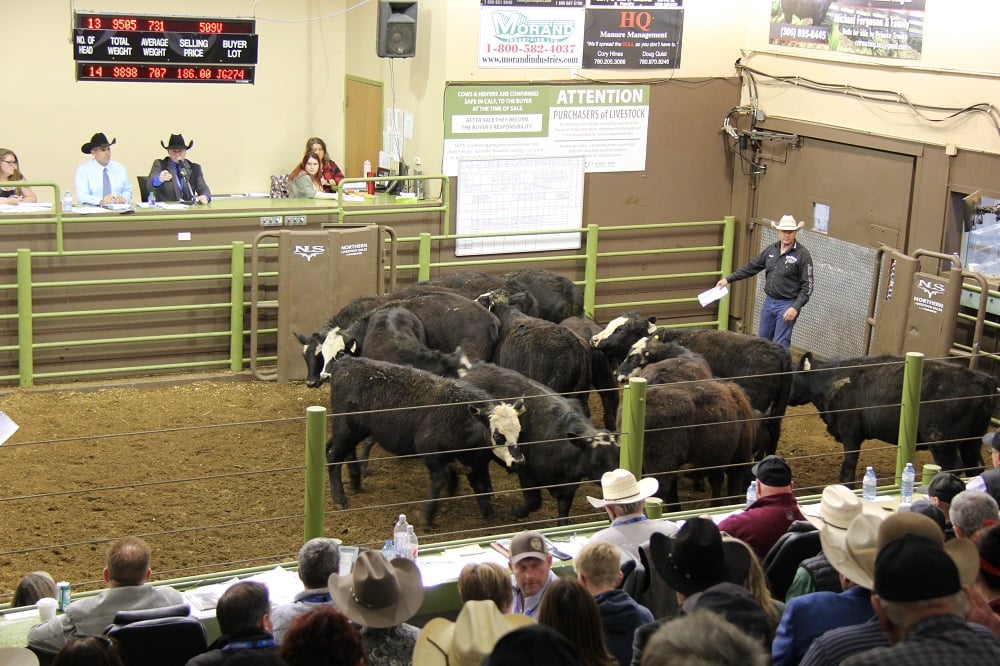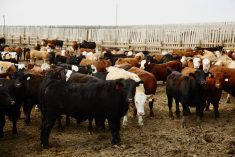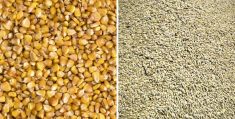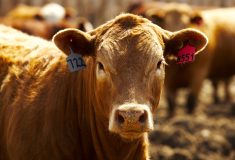I’ve received many inquiries from cow-calf producers and feedlot operators regarding the fed cattle outlook for the spring and summer time frame. The Alberta fed cattle market has been trading at a discount to prices in Nebraska and Kansas. It appears that there is a backlog of market-ready supplies similar to last year. The Western Canadian drought during 2021 caused an abnormal placement structure. We’ve also seen a year-over-year increase in U.S. feeder cattle exports to Canada. These two factors have resulted in the year-over-year increase in cattle-on-feed numbers in Alberta and Saskatchewan. During January and February, the Alberta fed market functioned to encourage demand by trading at a sharp discount to U.S. prices. At the same time, Alberta packing plants continue to struggle with labour issues, resulting in a wide range of bids from week to week.
Read Also

Cattle Market Summary
Break-evens, cow and calf prices, plus market summaries courtesy of Canfax and Beef Farmers of Ontario. Cost of Production September…
I thought this would be an opportune time to review the fed cattle supply fundamentals. Feeding margins have been deep in red ink on unhedged cattle. Cattle feeders who place cattle in custom lots are planning their strategy for the 2022 calendar year. Cow-calf producers are also strategizing when they should sell feeders based on the fed cattle market. Remember, the yearling market is the live cattle market five months forward. Therefore, it’s important to have a good understanding of how the fundamentals will change over the next six- to eight-month period.
First, I’ve received many calls from cattle feeders and they don’t understand when a cattle-on-feed report is bullish or when a cattle-on-feed report is bearish. Let me clarify any misconceptions. A cattle-on-feed report is bearish when the feedlot marketings are below expectations and placements in the top two weight categories are sharply above year-ago levels. A cattle-on-feed report can have a total supply above last year, but if most of the placements are in the lighter-weight categories, this doesn’t influence the nearby price structure. Placements in heavier-weight categories can be lower on subsequent reports, resulting in lower market-ready supplies longer-term. Don’t just look at the total number. Cattle producers need to fully dissect the report. Producers need to compare the placements by weight category to last year. Second, in most cases, the cattle-on-feed report has no bearing on the cash fed cattle market for the immediate and subsequent month because these cattle were placed sooner. This is very important to understand.
The USDA reported total cattle-on-feed inventories in 1,000-head-plus feedlots as of January 1 at 12.03 million head, up one per cent from January 1, 2021. If you look at the placements by weight category, there was a sharp year-over-year increase in cattle placed under 800 pounds. U.S. feedlot placements during December in the 900-pound-plus categories were actually down from year-ago levels. More importantly, U.S. feedlot placements from July through October 2021 were 118,000 head lower from the same period of 2020. Therefore, market-ready supplies during the first quarter of 2022 will be down sharply from the first quarter of 2021. Lower placements during the late summer and early fall have resulted in a year-over-year decrease in market-ready fed cattle supplies during the first quarter of 2022.
In Western Canada, we have the opposite environment for fed cattle market-ready supplies. Cattle-on-feed inventory in Alberta and Saskatchewan as of January 1, 2022, was up 12 per cent from January 1, 2021. More importantly, feedlot placements in Alberta and Saskatchewan from July through October 2021 were up a whopping 189,500 head compared to the same time frame in 2020. Therefore, fed cattle market-ready supplies during the first two months of 2022 are up about 150,000 head from the first two months of 2021. Feedlot operators in Alberta have been asking why the Alberta fed market is at such a discount to the U.S. Well, this is why. There is a huge backlog of market-ready supplies in Western Canada and there is no set-aside program this winter.
The main question is when this backlog will be alleviated. Given my current projections this will only happen in May or June. During spring, we’ll see the Alberta fed market actually trade at a premium to U.S. values. The market will transition during April from encouraging demand for fed cattle to rationing demand for fed cattle.
For cow-calf producers, the feeder market in Western Canada has also been trading at a discount to similar-weight cattle in Nebraska. The feeder market is in a similar price structure to fed cattle relative to prices south of the border. The feeder market has also been encouraging exports and will move through a transition during the summer, approximately two months behind the fed cattle market. During late summer and fall, Canadian prices for calves and yearlings will be at a premium to the U.S.
In conclusion, it’s important to dissect and study placements by weight category on the cattle-on-feed report. This will help cow-calf producers plan their marketing strategy. At the same time, this will enhance a finishing feedlot’s risk management program.

















